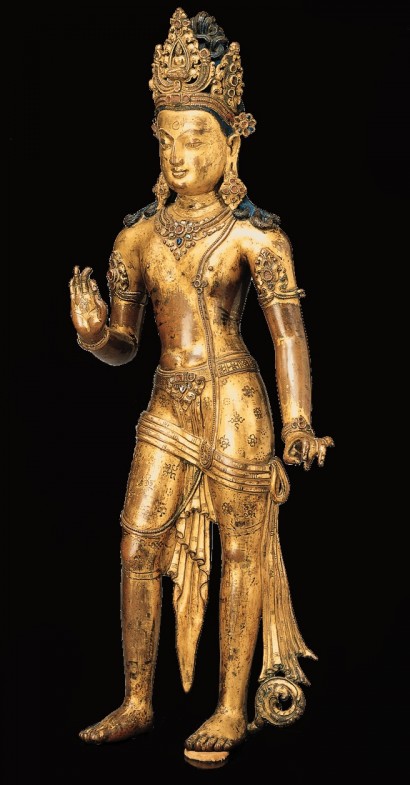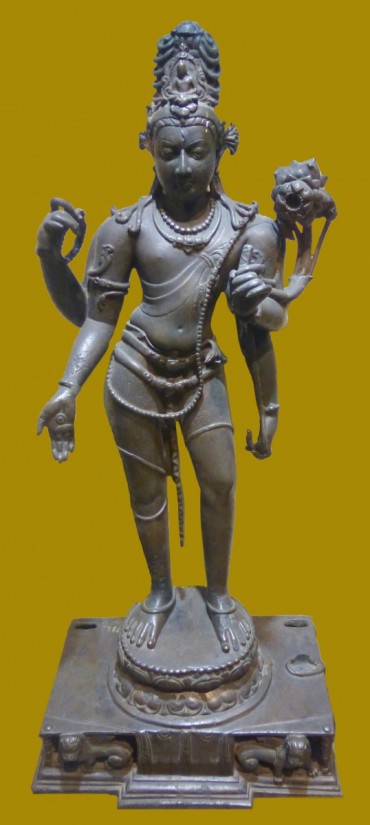Nepal, Transitional period, late 10th–early 11th century; gilt copper alloy with inlays of semiprecious stones; 26 3/4 x 11 1/2 x 5 1/4 in.; Asia Society, New York, Mr. and Mrs. John D. Rockefeller 3rd Collection, 1979.47, photo: Susumu Wakisaka, Idemitsu Museum of Arts, Tokyo, Courtesy of Asia Society, New York.
Avalokiteshvara
India, Gaya, Bihar, Pala period, 9th century; bronze; Patna Museum, photo: www.photodharma.net.
By the 9th century, Indian depictions of Avalokiteshvara achieved an unprecedented degree of aesthetic refinement, as seen in this extremely rare bronze sculpture. Although exhibiting four arms instead of two, this impressive statue is the type of work that gave rise to the Nepalese Padmapani. Note, however, that the Indian sculpture lacks the semiprecious stone inlays seen on the figure to the left. This lavish technique is thought to be a Nepalese invention. Yet both works are mesmerizing visions of spiritual beneficence, providing worshippers with an opportunity for darshana, or auspicious viewing.





